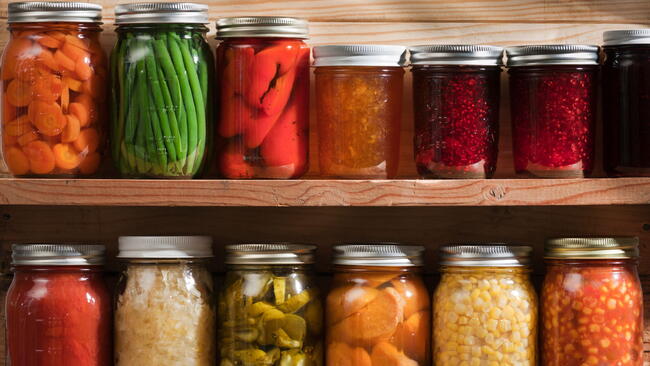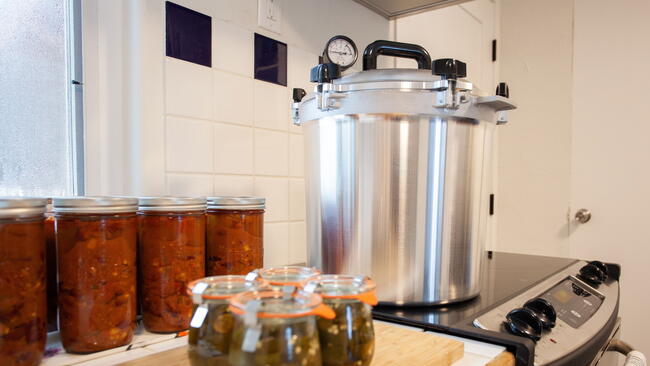Summer brings a bounty of healthy, farm-fresh food! But remember to properly wash your raw fruit and vegetables! It’s not difficult and safety is especially important these days. Here are 10 quick tips to ensure our fruit and vegetables are properly cleaned and stored.
We all know that fresh fruit and vegetables have enormous health benefits, helping to prevent heart disease, stroke, and some cancers. Healthy snacks also help us manage our weight.
But it’s important to select and prepare produce safely. While we usually think of meat and poultry when it comes to food-borne illness, sometimes raw vegetables and fruit can contain harmful bacteria, too. Produce may be contaminated due to the soil or water where the produce was grown, or during storage, shipping, or preparation.
Food Safety Tips for Produce
Review this list to make sure you properly clean and store fruit and vegetables to avoid food-borne illness:
- Choose produce that isn’t bruised or damaged. Openings can provide entryway for pathogenic bacteria during shipping.
- Spiralized and pre-cut produce must be refrigerated or on ice! If you must buy cut fruits or veggies, refrigerate them right after cutting them up.
- Separate fruits and vegetables from raw meat, poultry, and seafood in your shopping cart, in your grocery bags, and in your kitchen.
- Wash your hands hot soapy water before preparing food. Wash kitchen surfaces and utensils with hot, soapy water before preparing food. Just get in the habit of doing a “clean sweep” of your counters and cutting boards before you get started.
- Clean all vegetables and fruit before eating, cutting, or cooking, unless the package says the contents have been washed.
- Do not wash produce with soaps or detergents. Use clean potable cold water to wash items.
- Scrub anything with rough or wrinkled skin with a vegetable brush to get rid of hard-to-remove microbes.
- Produce with a lot of nooks and crannies, like cauliflower, broccoli, or lettuce, should be soaked for 1 to 2 minutes in cold, clean water. Drain leafy greens with a strainer or colander and repeat this process. Then dry with a clean towel or salad spinner.
- Cut away any damaged or bruised areas before preparing or eating.
- Don’t soak berries or fruits with fragile skin in water. Put fragile produce in a colander and spray it with distilled water.
- Dry fruit or vegetables with a clean paper towel.
- There is no need to rewash packaged products labeled “ready-to-eat,” “washed,” or “triple-washed.”
- Eating on the run? Fill a spray bottle with distilled water and use it to wash apples and other fruits.
- Even if you don’t plan to eat the peel, thoroughly rinse produce under running water so germs do not get inside the surface when you cut.
- Cut your vegetables or fruit as close as possible to the time you’ll be eating them.
- Always use a sharp cutting knife, and clean it well before cutting your fruits or vegetables.
- Refrigerate fruits and vegetables you have cut, peeled, or cooked within 2 hours (or 1 hour if the outside temperature is 90°or warmer). Chill them at 40°F or colder in a clean container.
- Cooking vegetables and fruit is the safest way to consume them if there is a question about their safety, especially while traveling (though it will may change their nutritional value).
Cut Your Own Fruit and Vegetables
The plastic containers of spiralized veggies have become very popular. Here’s why I suggest buying fruit and vegetables whole and cutting them yourself:
- Because you put in the labor and avoid the packaging, whole foods are less expensive, especially when they’re in season. Face it: it isn’t that difficult to cut up a melon or a cucumber.
- They’re more nutritious. As soon as a fruit or vegetable is cut, light and oxygen begin to degrade its vitamin content. Especially vulnerable is the antioxidant Vitamin C. The smaller the pieces, the greater the exposed surface area, and the greater the losses.
- They keep a lot longer. Plant foods continue to respire after being cut, hastening oxidation and spoilage.
- Even a short, refrigerated stay in a container may affect the flavor and texture of your pre-cut fruits or vegetables. You’ve probably noticed that the beautiful-looking watermelon and cantaloupe cubes, broccoli florets, and other cut produce in salad bars often have an off taste.
- You’ll have less plastic to discard. The planet is awash in plastic containers. Do your bit; avoid them when possible.
What about those commercial vegetables washes?
Chemical rinses and other treatments for washing produce are often advertised as the best way to keep fresh produce safe in the home. However, the Department of Food Science and Human Nutrition at the University of Maine tested several major products. None were more effective than a clean water wash. The FDA also advises against using commercial produce washes and recommends washing produce in cold tap water.
Learn more about food safety:










Comments